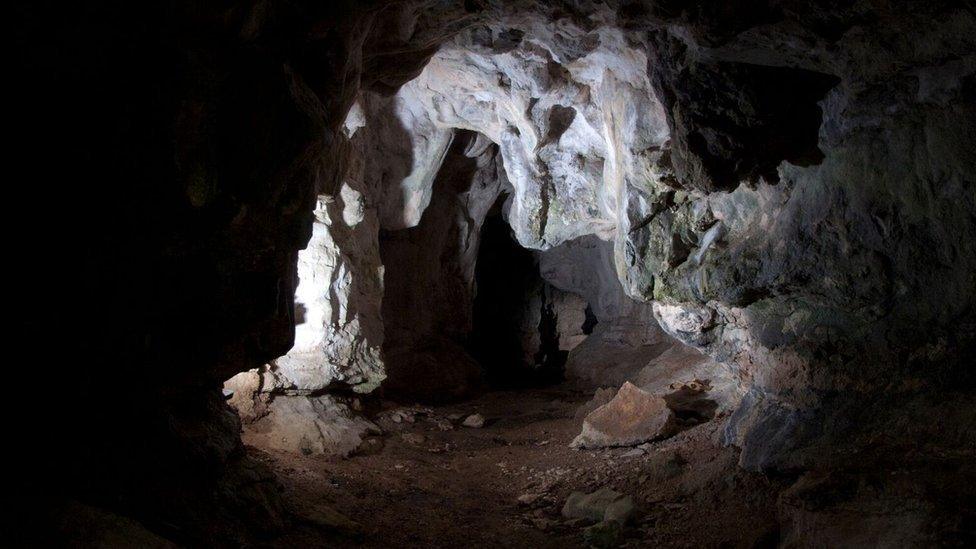Earliest evidence of humans in Ireland
- Published

The knife marks were made on fresh bone
A bear bone found in a cave may push back dates for the earliest human settlement of Ireland by 2,500 years.
The bone shows clear signs of cut marks with stone tools, and has been radiocarbon dated to 12,500 years ago.
This places humans in Ireland in the Palaeolithic era; previously, the earliest evidence of people came from the Mesolithic, after 10,000 years ago.
The brown bear bone had been stored in a cardboard box at the National Museum of Ireland for almost a century.
Since the 1970s, the oldest evidence of human occupation in Ireland has been the hunter-gatherer settlement of Mount Sandel on the banks of the River Bann, County Londonderry, which dates to 8,000 years ago.
Antiquarians and scientists have been searching for an Irish Palaeolithic since the second half of the 19th Century.
Over this 150-year period, occasional Palaeolithic tools have surfaced but in each case have been dismissed as objects originating from Britain that had simply been carried along by ice sheets or other geological processes.
During the Palaeolithic, Ireland was already an island, cut off from the rest of northwest Europe, so nomadic hunter-gatherer groups would have arrived by boat.

The bear bone was among prehistoric remains found in caves in County Clare
The brown bear patella - or knee bone - dates to a time at the end of the Ice Age when the climate was considerably colder.
In addition to brown bears, humans would have come into contact with - and possibly hunted - giant deer, red deer, reindeer, hare and wolves.
The discovery was made by Dr Marion Dowd, an archaeologist at IT Sligo; and Dr Ruth Carden, from the National Museum of Ireland.
"Archaeologists have been searching for the Irish Palaeolithic since the 19th Century, and now, finally, the first piece of the jigsaw has been revealed. This find adds a new chapter to the human history of Ireland," said Dr Dowd.
The adult bear bone was one of thousands of bones originally discovered in Alice and Gwendoline Cave, County Clare, in 1903. The excavators published a report on their investigations and noted that the bear bone had knife marks.
The bone has been stored in a collection at the National Museum of Ireland since the 1920s.
In 2010 and 2011, Dr Carden re-analysed and documented the museum's animal bone collection. As a specialist in cave archaeology, Dr Dowd became interested in the bone from the butchered bear and the two scientists sought to carry out radiocarbon dating of the Chrono Centre at Queen's University Belfast.
"When a Palaeolithic date was returned, it came as quite a shock. Here we had evidence of someone butchering a brown bear carcass and cutting through the knee probably to extract the tendons," said Dr Dowd.
The examinations determined that the cut marks were made on fresh bone, confirming they were of the same date as the patella, and therefore that humans were in Ireland during the Palaeolithic period.
"This made sense as the location of the marks spoke of someone trying to cut through the tough knee joint, perhaps someone who was inexperienced," explains Dr Dowd.
"In their repeated attempts, they left seven marks on the bone surface. The implement used would probably have been something like a long flint blade."